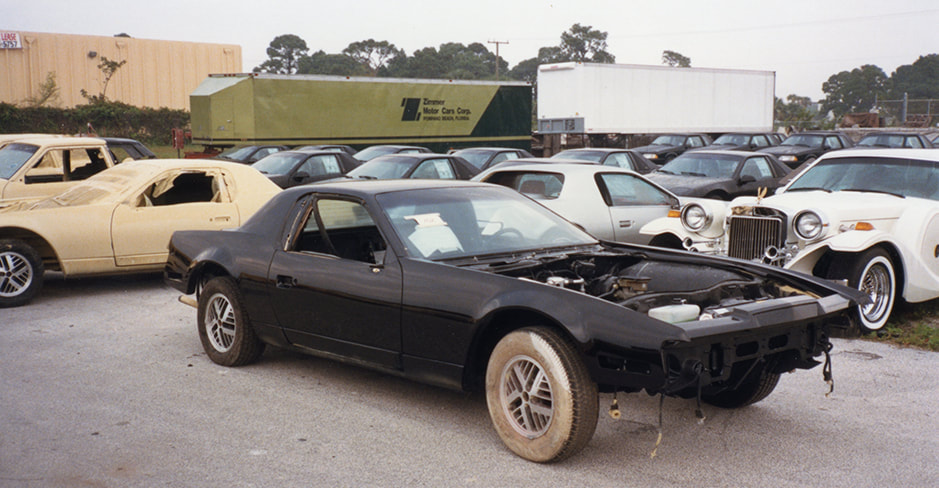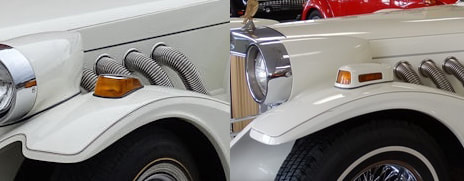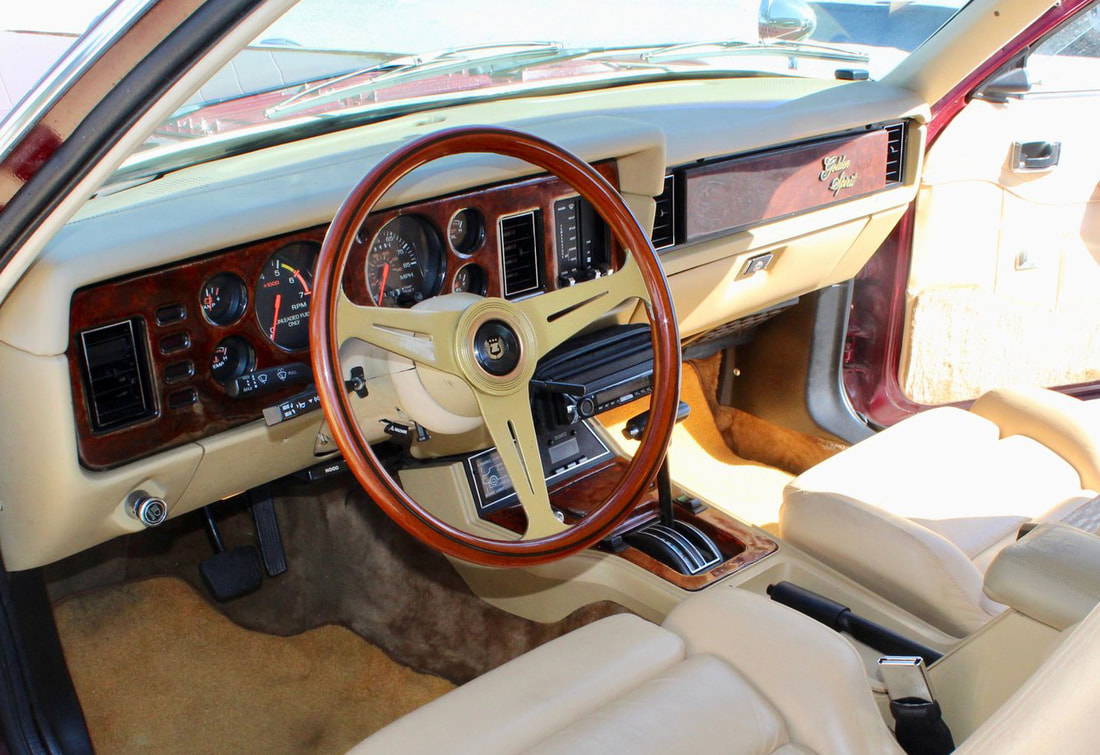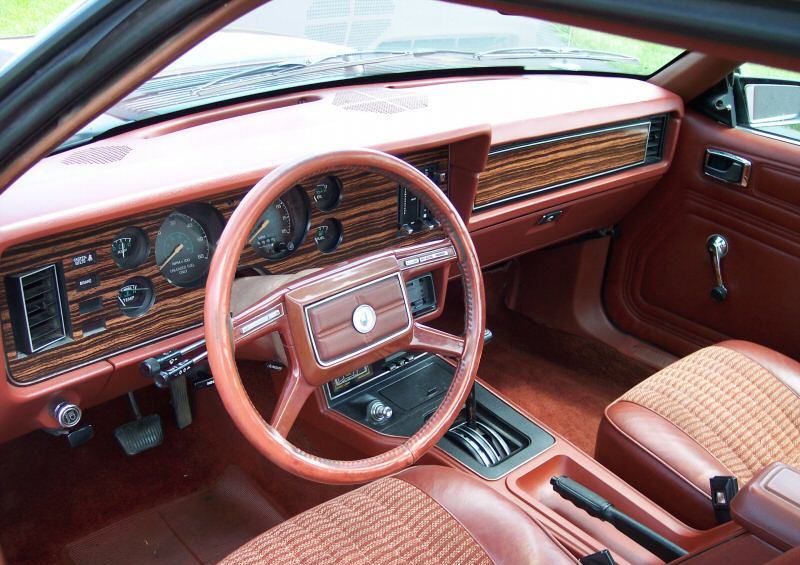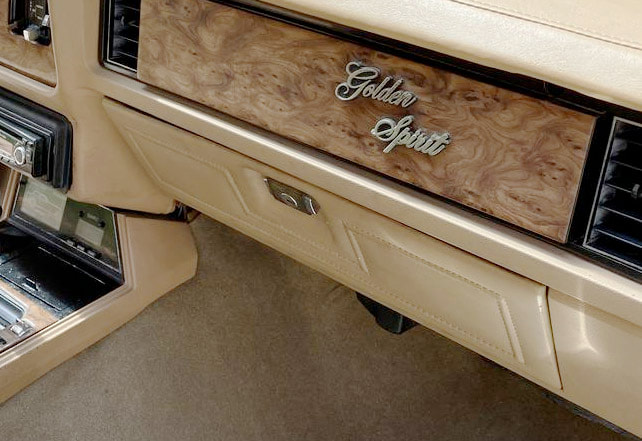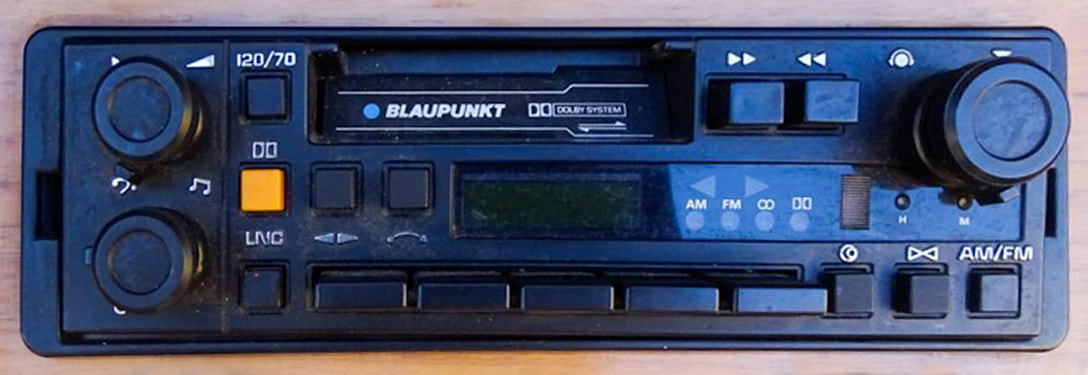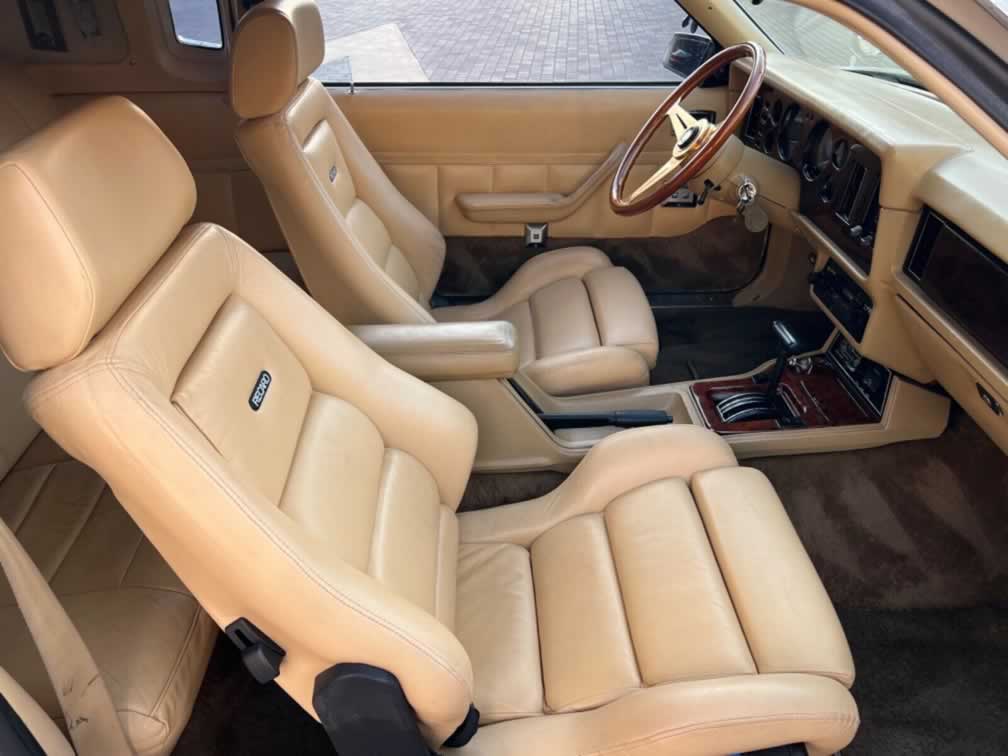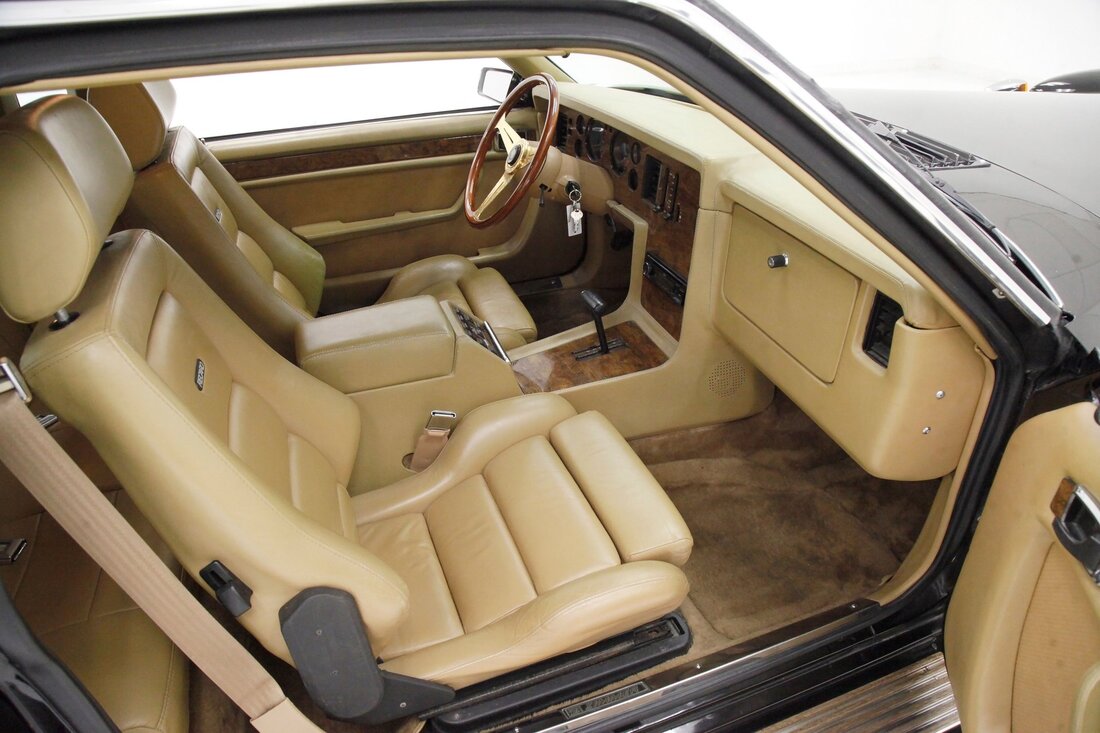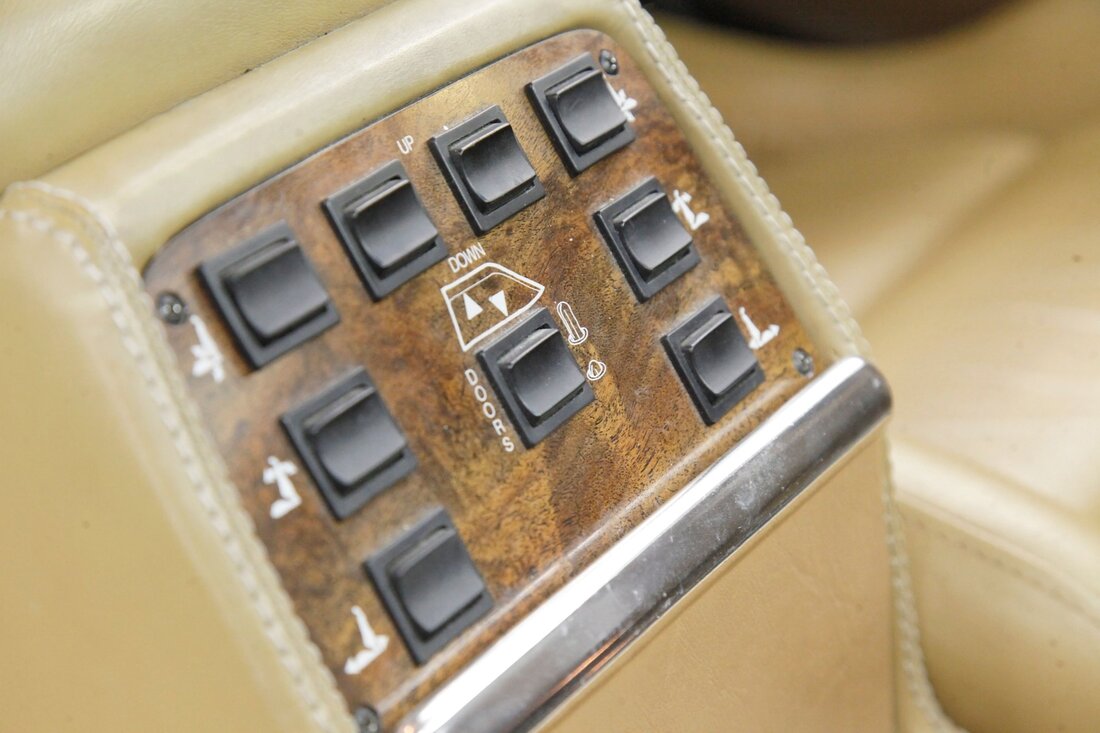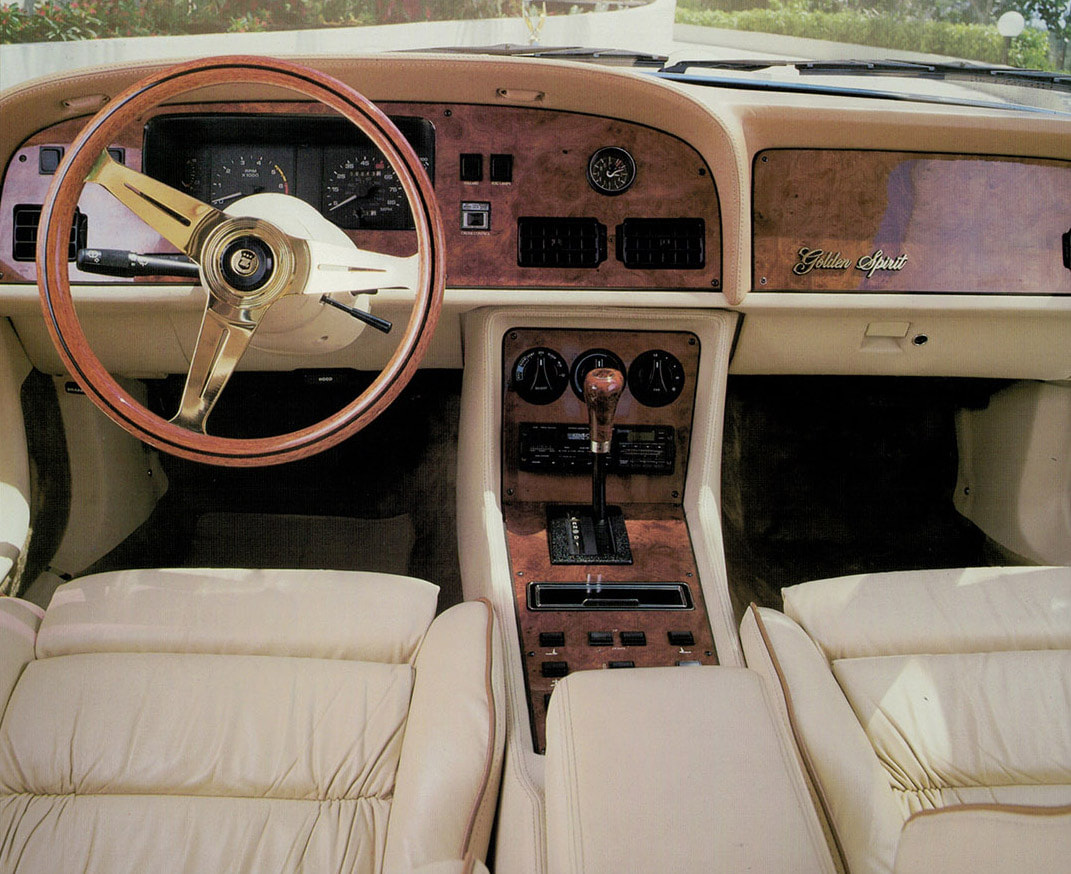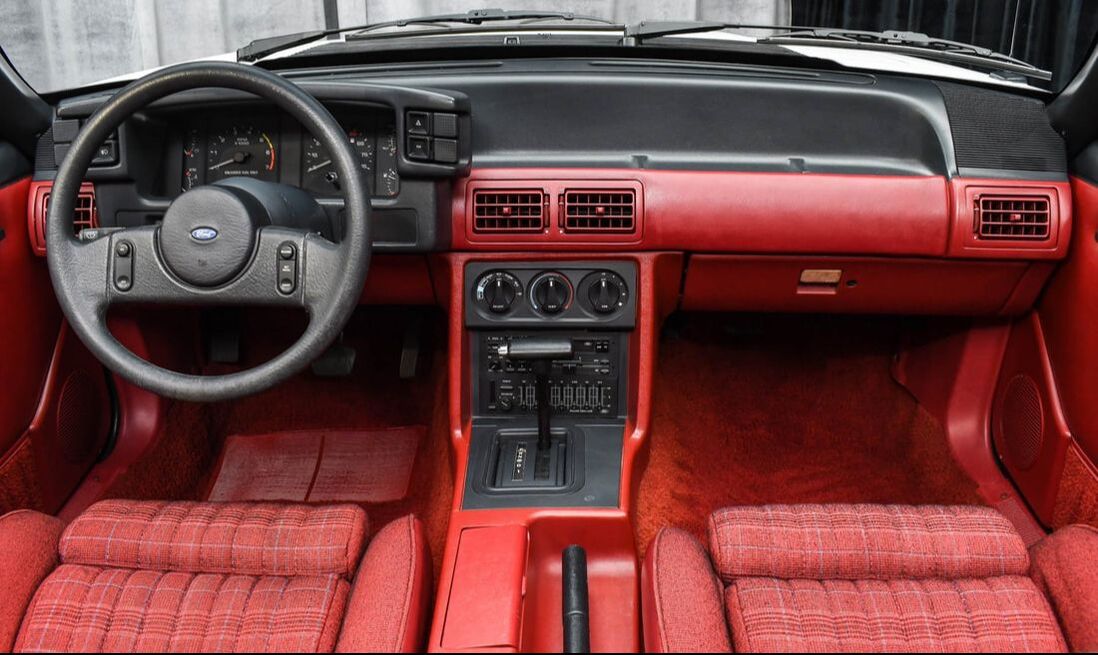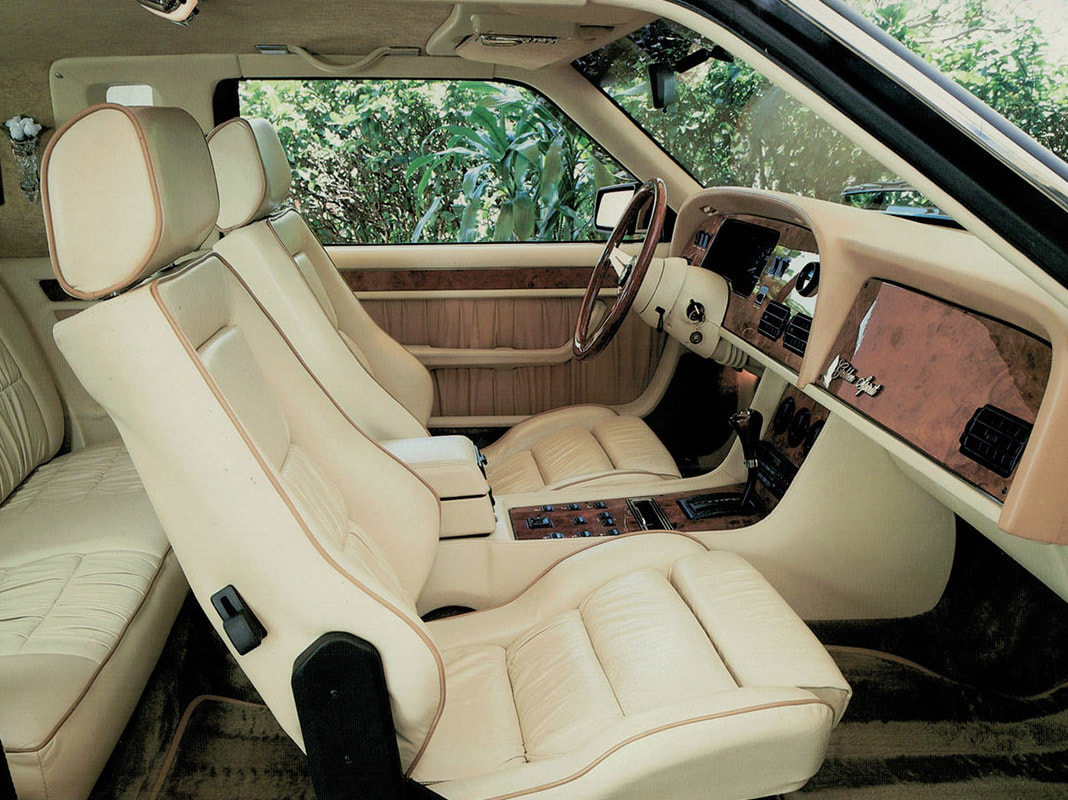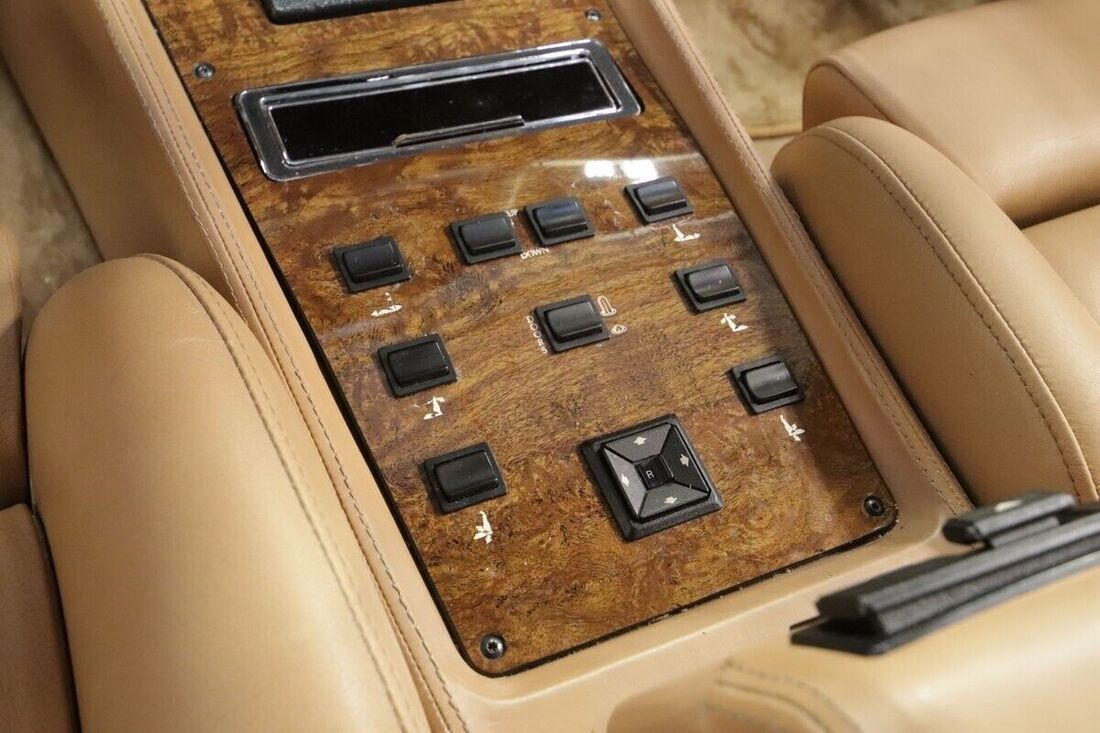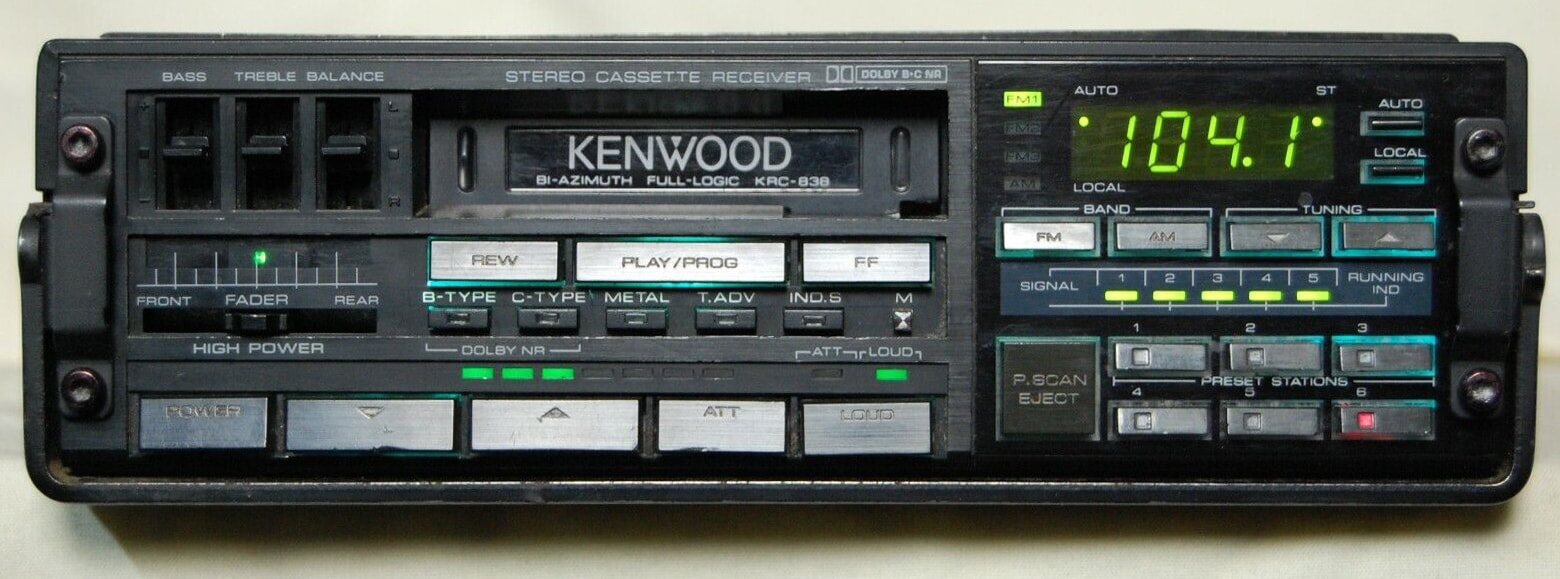1981-1988 Golden Spirit Differences
The overall design of the Golden Spirit changed very little from the start to the end of production, but there was continual refinement to the design and features. Some were a result of changing parts suppliers or response to market demands and others were dictated by changes made by Ford with the Mustang LX, which served as the chassis for the coachbuilt Golden Spirit.
The differences noted below are based on company brochures, articles from period publications, conversations with former employees, and observations based on photos in the Golden Spirit Registry.
The differences noted below are based on company brochures, articles from period publications, conversations with former employees, and observations based on photos in the Golden Spirit Registry.
Golden Spirit Models
This brochure refers to three different models. The brochure is not dated, but specifications indicate a 302 cu in V8. electronic fuel injection and a four-speed automatic with overdrive transmission which was first offered by Ford in 1984, so it's safe to presume this is no earlier than that.
Zimmer Classic - 1/2 (landau) vinyl padded roof
Zimmer Cabriolet - simulated convertible roof
Zimmer Elegánce - full vinyl roof, luggage rack
A different, undated brochure, with photos refers to a Coupe, Formal and Convertible. The Convertible is just that, a true convertible while the Coupe is pictured with a 1/2 vinyl roof and the Formal has a body color painted roof.
This "Features and Specification" brochure is dated May 1984, and it also refers to these three different model names - Coupe, Formal and Convertible. Specifications are identical for the Coupe and Formal, and the Convertible only differs in that it is a true convertible. Ford began offering convertible Mustangs in 1983, but anecdotal evidence says that some Zimmer convertibles were converted prior to that.
Zimmer Classic - 1/2 (landau) vinyl padded roof
Zimmer Cabriolet - simulated convertible roof
Zimmer Elegánce - full vinyl roof, luggage rack
A different, undated brochure, with photos refers to a Coupe, Formal and Convertible. The Convertible is just that, a true convertible while the Coupe is pictured with a 1/2 vinyl roof and the Formal has a body color painted roof.
This "Features and Specification" brochure is dated May 1984, and it also refers to these three different model names - Coupe, Formal and Convertible. Specifications are identical for the Coupe and Formal, and the Convertible only differs in that it is a true convertible. Ford began offering convertible Mustangs in 1983, but anecdotal evidence says that some Zimmer convertibles were converted prior to that.
About the Vehicle Identification Number (VIN)
Every Zimmer Golden Spirit has a 17-digit Vehicle Identification Number or VIN. It's unique to the car and in this case, was originally attached to the Ford Mustang that was coachbuilt by Zimmer Motor Cars to become your Golden Spirit. It is located the the lower left (as seated in the car) corner of the windshield and is visible from outside the car. Zimmer Motor Cars removed the cowl tag and most of the VIN markings from the rest of the car as part of their coachbuilding process.
As seen in the photo above, Zimmer Motor Cars bought Mustangs as new vehicles as seen in the upper right corner. Depending on the timing, they may have ended up buying, for example, a 1984 model in the late summer. By the time the build was completed it may have been early 1985. The Zimmer production plate may JAN 85, but legally, the car is a 1984 model if the 10th character of the VIN is an "E". So your production plate may say one thing, and your title could be different. This can be important when buying parts for your car.
Here are the letters used in the 10th space of the VIN that legally dictate the model year of the vehicle.
The 8th character of the VIN is your engine code (see below).
Mechanical
1981 - 255ci (4.2L) V8 with 115hp, three-speed automatic transmission (Code D)
1982 - 255ci (4.2L) V8 with 120hp, three-speed automatic transmission (Code D)
1983 - 302ci (5.0L) V8 with 175hp, three-speed automatic transmission (Code F)
1984 - 302ci (5.0L) V8 with 175hp, four-speed automatic overdrive transmission (Code F)
1985 - 302ci (5.0L) V8 with 175hp, four-speed automatic overdrive transmission (Code F)
1986 - 302ci (5.0L) V8 with 210hp, four-speed automatic overdrive transmission (Code M)
1987 - 302ci (5.0L) V8 with 225hp, four-speed automatic overdrive transmission (Code E)
1988 - 302ci (5.0L) V8 with 225hp, four-speed automatic overdrive transmission (Code E)
1982 - 255ci (4.2L) V8 with 120hp, three-speed automatic transmission (Code D)
1983 - 302ci (5.0L) V8 with 175hp, three-speed automatic transmission (Code F)
1984 - 302ci (5.0L) V8 with 175hp, four-speed automatic overdrive transmission (Code F)
1985 - 302ci (5.0L) V8 with 175hp, four-speed automatic overdrive transmission (Code F)
1986 - 302ci (5.0L) V8 with 210hp, four-speed automatic overdrive transmission (Code M)
1987 - 302ci (5.0L) V8 with 225hp, four-speed automatic overdrive transmission (Code E)
1988 - 302ci (5.0L) V8 with 225hp, four-speed automatic overdrive transmission (Code E)
Very few 1988 Mustang donors were used in Golden Spirit production. If you have a Golden Spirit that you believe is based on a 1988 Mustang, check the 10th digit of your VIN and if it is the letter "J", we'd love to hear from you.
Exterior
In this brochure, a passage of text reads:
Lasting Value
Years from now your car will look like the newest model – that makes the Golden Spirit a very wise investment.
Years from now your car will look like the newest model – that makes the Golden Spirit a very wise investment.
In other words, very minor exterior changes would be made - the model year changes so common with other manufacturers would not happen at Zimmer Motor Cars. And, with well over 1,000 Golden Spirits built between 1981 and 1988, that's very true.
Front turn signal housing - whether to try to obscure it's humble roots (as sourced from the VW Beetle parts bin) or some other reason lost to time, the housing changed from plain chrome to a bespoke body color design sometime in the latter half of 1986 and between production numbers 1141 and 1203.
Front turn signal housing - whether to try to obscure it's humble roots (as sourced from the VW Beetle parts bin) or some other reason lost to time, the housing changed from plain chrome to a bespoke body color design sometime in the latter half of 1986 and between production numbers 1141 and 1203.
Interior
"Gen 1" Interior
The first several hundred Golden Spirit's built up to the summer of 1984 used the same dash, center console and door panels very similar to that of Mustang (though re-trimmed in leather and the Ford faux woodgrain replaced with real wood veneers). The stock seats were replaced with much higher quality, German-made Recaro versions, the steering wheel and carpets replaced.
The first several hundred Golden Spirit's built up to the summer of 1984 used the same dash, center console and door panels very similar to that of Mustang (though re-trimmed in leather and the Ford faux woodgrain replaced with real wood veneers). The stock seats were replaced with much higher quality, German-made Recaro versions, the steering wheel and carpets replaced.
Around production number 700 or so, there was some a small change on their glovebox lids as seen below.
Blaupunkt CR-5001 stereo head units replaced the original Ford radios during the 1981-1984 "Gen 1" interiors.
"Gen 1 Facelift" Interior
Over the summer of 1984 - between #751 (June 84) and #879 (Sept 84) - significant changes to the interior door panels, glove box, shifter area and center console were made. At this time, power door locks, window and seat controls were moved to the center console, just ahead of the armrest.
BEFORE:
Over the summer of 1984 - between #751 (June 84) and #879 (Sept 84) - significant changes to the interior door panels, glove box, shifter area and center console were made. At this time, power door locks, window and seat controls were moved to the center console, just ahead of the armrest.
BEFORE:
AFTER:
AFTER (new switch location):
The Blaupunkt New York SQR 83 stereo head unit is shown in this brochure installed in a "Gen 1 Facelift" interior.
"Gen 2" Interior
The Mustang was to receive a redesigned interior for the 1987 model year including an all-new dash, center console, and revised door trim. According to Zimmer Motor Cars designer Don Johnson and modeler Chuck Boudreau, due to Zimmer's excellent relationship with Ford, they received advance notice of this change and a prototype interior from Ford in order to be ready for this change. Don Johnson designed the "Gen 2" Golden Spirit dash, console (now with drink holder, padded armrest, cassette storage compartment and secondary storage compartment for an optional cellular phone) and new ruched upholstery on door panels and seating surfaces. This went into production sometime in late 1986 (between production number 1141 and 1203) as Zimmer began to receive the '87 model year Mustangs.
As many of the original factory Ford parts from the interior were used, both for reasons of cost and future serviceability. When compared as seen below, similarities appear, but the new design by Johnson does an admirable job giving the Golden Spirit a tasteful, sculpted look.
The Mustang was to receive a redesigned interior for the 1987 model year including an all-new dash, center console, and revised door trim. According to Zimmer Motor Cars designer Don Johnson and modeler Chuck Boudreau, due to Zimmer's excellent relationship with Ford, they received advance notice of this change and a prototype interior from Ford in order to be ready for this change. Don Johnson designed the "Gen 2" Golden Spirit dash, console (now with drink holder, padded armrest, cassette storage compartment and secondary storage compartment for an optional cellular phone) and new ruched upholstery on door panels and seating surfaces. This went into production sometime in late 1986 (between production number 1141 and 1203) as Zimmer began to receive the '87 model year Mustangs.
As many of the original factory Ford parts from the interior were used, both for reasons of cost and future serviceability. When compared as seen below, similarities appear, but the new design by Johnson does an admirable job giving the Golden Spirit a tasteful, sculpted look.
1987 Ford Mustang
This brochure shows the Kenwood KRC-838 stereo installed in a "Gen 2" interior.
